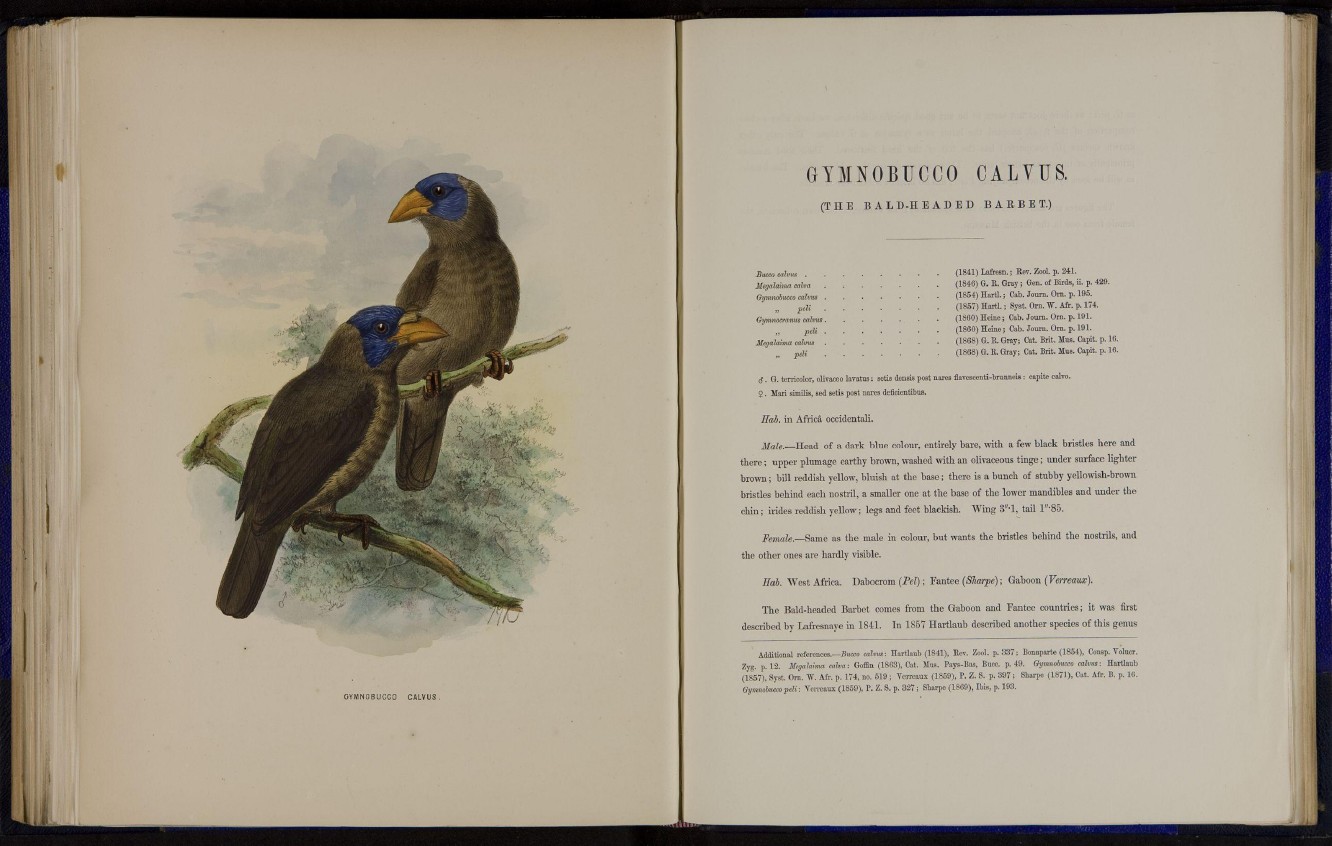
GYMNOBUCCO CALVUS
GYMNOBUCCO CALVUS.
( T H E B A L D - H E A D E D B A R B E T .)
Bucco calvus (1841) Lafresn.; Rev. ZooL p. 241.
Metjalaima calva (1846) G. R. Gray; Gen. of Birds, ii. p. 429.
Oymnobucco calvus (1854) Hartl.; Cab. Journ. Orn. p. 195.
pelt (1857) Hartl.; Syst. Orn. W. Afr. p. 174.
Gymnocranus calvus . (1860) Heine; Cab. Journ. Orn. p. 191.
„ peli (1860) Heine; Cab. Journ. Orn. p. 191.
Mtgalaima calvus (1868) G. R. Gray; Cat. Brit. Mus. Capit. p. 16.
peli (1868) G. R. Gray; Cat. Brit. Mus. Capit. p. 16.
cS . G. terricolor, olivaceo lavatus: setis densis post nares flavescenti-brunneis : capite calvo.
$ . Mari similis, sed setis post nares deficicntibus.
Hob. in Africa occidentali.
Male.—Head of a dark blue colour, entirely bare, with a few black bristles here and
t h e r e ; upper plumage earthy brown, washed with an olivaceous tinge; under surface lighter
brown; bill reddish yellow, bluish at the base; there is a bunch of stubby yellowish-brown
bristles behind each nostril, a smaller one at the base of the lower mandibles and under the
chin ; irides reddish yellow; legs and feet blackish. Wing 3"*1, tail 1""85.
Female.—Same as the male in colour, but wants the bristles behind the nostrils, and
the other ones are hardly visible.
Hab. West Africa. Dabocrom (Pel); Fantee (Sharpe); Gaboon (Verreaux).
The Bald-headed Barbet comes from the Gaboon and Fantee countries; it was first
described by Lafresnayc in 1841. In 1857 Hartlaub described another species of this genus
Additional references.—Bucco calvus: Hartlaub (1841), Rev. Zool. p. 337; Bonaparte (1854), Consp. Volucr.
Zyg. p. 12. Megalaima calva: Goffln (1863), Cat. Mus. Pays-Bas, Buce. p. 49. G-ymnobueco calvus: Hartlaub
(1857). Syst. Orn. W. Afr. p. 174, no. 5 1 9 ; Verreaux (1859), P. Z. S. p. 3 9 7 ; Sharpe (1871), Cat. Afr. B. p. 16.
Gymnobucco peli: Verreaux (1859), P. Z. S. p. 327; Sharpe (1869), Ibis, p. 193.